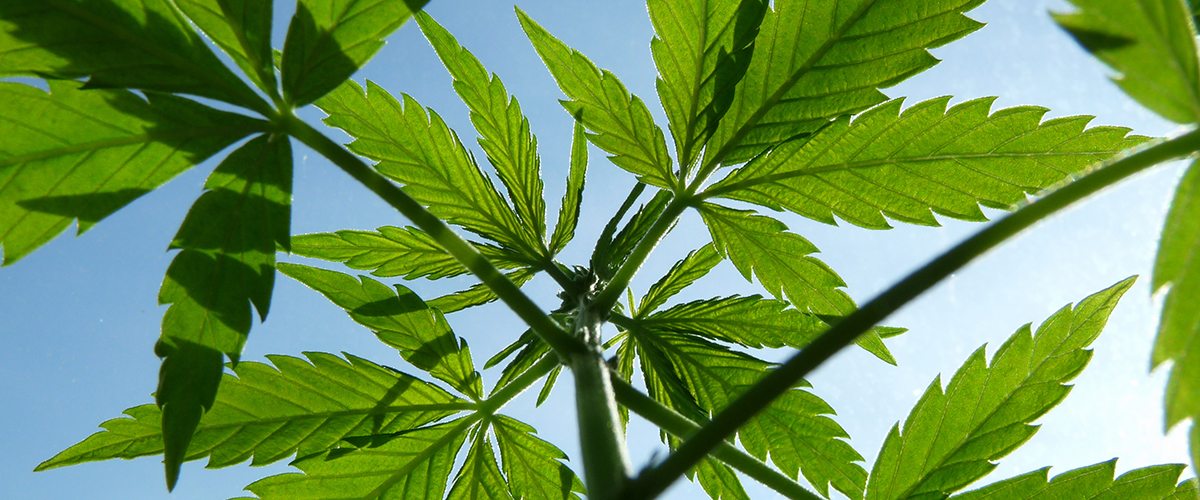[vc_row][vc_column][vc_column_text]
Researchers have found a long history of cannabis roots being used for managing pain and inflammation conditions.
While it’s the stalks, seeds, leaves, and flowers of cannabis plants that are most recognized for their usability, new evidence suggests the plant’s roots also have multiple applications. A new review paper investigating the therapeutic use of the roots of cannabis plants has found a long history of medicinal use, with early reports of the plant being used topically to treat inflammation, pain, and gout.
Researchers Natasha R. Ryz, David J., Remillard, and Ethan B. Russo examined the historical medical use of the roots of the cannabis plant. According to the review, among the earliest record of the use of roots is from Pliny the Elder, who in the first century in Natural Histories described, “a decoction of the root in water relaxes contractions of the joints and cures gout and similar maladies.” By the 17th century, several herbalists recommended cannabis roots for various conditions, including inflammation, skin burns, hard tumors, gout, and arthritis and joint pain.
Historical accounts of cannabis roots also describe them as being used to treat postpartum hemorrhage, difficult child labor, sexually transmitted disease, and gastrointestinal activity and infection.
Persian Philosopher Ibn Sina wrote in Canon of Medicine, published in the 12th century, that “the compress with the boiled roots of cannabis decrease fever.” In Argentina, cannabis root was reportedly used for the treatment of fever caused by malaria.[/vc_column_text][/vc_column][/vc_row][vc_row][vc_column][vc_single_image image=”27642″ img_size=”full” onclick=”custom_link” img_link_target=”_blank” link=”https://www.medicalmarijuanainc.com/overview-of-medical-marijuana-research/”][/vc_column][/vc_row][vc_row][vc_column][vc_column_text]The review’s findings suggest that mechanisms behind the therapeutic application of cannabis roots likely has to do with compounds other than the plant’s cannabinoids.
“Surprisingly cannabis roots are low in cannabinoids [tetrahydrocannabinol] and [cannabidiol] but rich in other active compounds, such as Friedelin,” Ryz recently tweeted about the findings in the review.
The other active compounds Ryz and her colleagues found in cannabis roots, some of which have since been found to have potential anti-inflammatory properties, include triterpenoids, friedelin, epifriedelanol, alkaloids, cannabisativine, anhydrocannabisativine, carvone, dihydrocarvone, N-(p-hydroxy-β-phenylethyl)-p-hydroxy-trans-cinnamamide, various sterols such as sitosterol, campesterol, and stigmasterol, and other minor compounds, including choline.
Overall, the researchers conclude that cannabis roots should not be ignored as scientists investigate the pharmacotherapy of cannabis. The anti-inflammatory and pain-relieving properties of compounds found throughout the entire cannabis plant may hold therapeutic potential, although “further research is required to study the active compounds in cannabis roots and explore their potential therapeutic applications.”
“Targeting inflammation is going to be really important in the future of what cannabinoids can do, and it’s not just the cannabinoids but terpenes and all these other compounds in cannabis,” Ryz recently told The Georgia Straight.
“What’s interesting is when we reduce inflammation, because it plays a role in so many other diseases, we also reduce pain, damage, and other side effects,” Ryz added.
You can access the entire study, “Cannabis Roots: A Traditional Therapy with Future Potential for Treating Inflammation and Pain,” by visiting Cannabis and Cannabinoid Research.
Read about other research findings on cannabis’s therapeutic potential for pain and inflammation by visiting our education page. Keep up with the latest cannabis-related studies through our news feed.[/vc_column_text][/vc_column][/vc_row]






